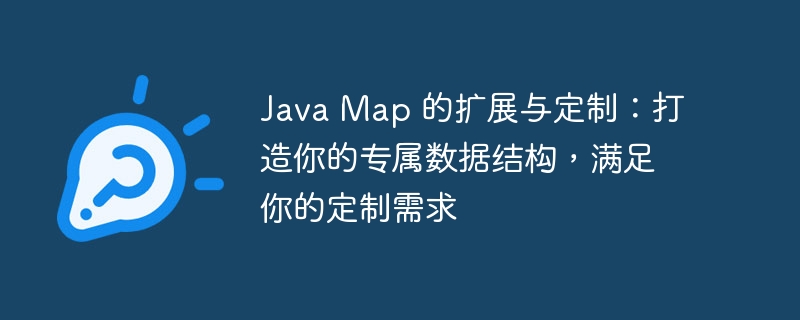

Written by PHP editor Xigua, this article will discuss the expansion and customization of Java Map, allowing you to create an exclusive data structure that meets your individual needs. Through customized operations, you can achieve more flexible and efficient data management to meet various customization needs. Let's take a deeper look at how to use the powerful functions of Java Map to provide better data processing solutions for your projects.
1. Extend Java Map
The simplest way to extend Java Map is to create a new class that inherits from the java.util.Map interface. This new class can add new methods or properties, and can also override methods in the Map interface. For example, we can create a new Map class and add a new method to calculate the sum of key-value pairs:
public class SummingMap<K, V extends Number> extends HashMap<K, V> {
public double sumValues() {
double sum = 0;
for (V value : values()) {
sum += value.doubleValue();
}
return sum;
}
}This new Map class can be used like a normal Map, but it also has the new functionality of calculating the sum of key-value pairs.
2. Customize the traversal order of Java Map
By default, Java Map is traversed according to the hash value of the key. But sometimes, we may need to traverse the Map in other order, such as in the natural order of keys or insertion order. We can customize the traversal order of the Map by overriding the keySet() method in the Map interface. For example, we can create a new Map class that traverses the keys in their natural order:
public class TreeMap<K extends Comparable<K>, V> extends HashMap<K, V> {
@Override
public Set<K> keySet() {
return new TreeSet<>(super.keySet());
}
}This new Map class can be used like a normal Map, but it will traverse the keys in their natural order.
3. Create a custom serializer
By default, Java Maps are serialized using Java's built-in serialization mechanism. But sometimes, we may need to use a custom serializer to serialize the Map. We can create a custom serializer by implementing the java.io.Serializable interface and defining a writeObject() method in the class. For example, we can create a new Map class and use a custom serializer to serialize the Map:
public class CustomMap<K, V> extends HashMap<K, V> implements Serializable {
private static final long serialVersionUID = 1L;
@Override
private void writeObject(ObjectOutputStream out) throws IOException {
out.writeInt(size());
for (Entry<K, V> entry : entrySet()) {
out.writeObject(entry.geTKEy());
out.writeObject(entry.getValue());
}
}
}This new Map class can be used like a normal Map, but it will use a custom serializer to serialize the Map.
4. Use third-party libraries to extend and customize Java Map
In addition to the above methods, we can also use third-party libraries to extend and customize Java Map. For example, we can use the Guava library to create a concurrent Map, the Apache Commons Collections library to create a sorted Map, or the Jackson library to create a JSON formatted Map .
5. Precautions
When extending and customizing Java Map, you need to pay attention to the following points:
I hope this article is helpful to you, thank you for reading!
The above is the detailed content of Extension and customization of Java Map: Create your own data structure to meet your customization needs. For more information, please follow other related articles on the PHP Chinese website!




